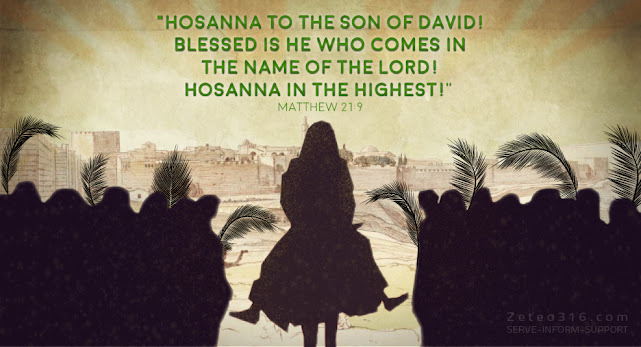Lesson 12 - Four Gospels - The Books
Lesson 12
FOUR GOSPELS - THE BOOKS
Reading Portion: Luke 1: 1-4, John 20: 30,31
Memory Verse: 2 Timothy 2: 8
Objective: To present Christ as the promised Messiah, the savior of the world and son of God, by a comparative study of 4 gospels. We know that ' gospel' means 'good news.' The good news is that Jesus delivers man from his sin and death by giving him eternal life. These 4 books are called 'gospels' because they reveal Jesus Christ to the world. Since the authors had different backgrounds, they present Jesus from different perspectives. There is only one good news of Jesus Christ, though He is depicted in 4 different ways in the four gospels.
CONTENT
The content of the 4 gospels is the birth of Christ, His mission. His death, His resurrection, and His ascension to heaven, But these gospels are not mere biographies. A biography usually starts with the birth of the person. But only Mathew and Luke have mentioned about the birth of Christ. Moreover, the life of Jesus, from his childhood to the 30th year, is not narrated in detail. The four writers present Jesus from four different angles, and they haven't kept the chronological order of the events. So there may be nominal differences in their presentations. But it is noteworthy that all of them have given importance to Christ's death and resurrection. You can note the way they narrate the last week of Jesus's life on earth. It is through Jesus's death and resurrection that mankind was saved. This is the central theme of 'the good news.'
Specialties of each gospel:-
The society during the apostolic age was divided into four groups.
1. The Jews, who were eagerly waiting for Messiah
2. The Romans who saw hard work and discipline as the core values of life.
3. The Greek, who was high- cultured and idealists
4. The Christians, who were following Jesus.
The four gospels were written for the benefit of these people.
1 GOSPEL OF MATHEW
This gospel's aim was to introduce Christ as the Messiah, David's son, who they were eagerly waiting for. Mathew also tries to prove that the prophecies about Messiah became true in Jesus. So this gospel was written exclusively for the Jews. They are why the gospel starts with the genealogy of Jesus Christ, the son of David, Abraham's son. We can see 29 quotations from the old testament in this gospel. 13 times, it is written: "that it might be fulfilled which was spoken by the prophet." Jews expected Messiah to reign on the throne of David. Mathew presents Jesus as the King. Mathew is the only writer who describes the arrival of the wise men from the east to see the king and the royal presents they give to baby Jesus.
2. GOSPEL OF MARK
Mark's gospel was mainly written for the Romans. They gave importance to works. So Mark didn't give emphasis to the genealogy or the birth of Jesus. His gospel is a description of the works of Jesus Christ. Romans always valued work. Discipline and service. So Mark presents Jesus as a servant who obeyed his master, unto the point of death. "For even the Son of Man came not to be ministered unto, but to minister, and to give his life ransom for many." Mark's aim was to present Jesus as a tireless servant of God. So mark describes the continuous work of Jesus. He gave emphasis to the sermons and parables of Jesus.
3. GOSPEL OF LUKE
As Luke was an educated Greek, he wanted to present Jesus before his people. The Greeks were highly civilized, and most of them were ideologists and philosophers. Since the Greeks valued ideologies and philosophies, Luke presents Jesus as a complete man. God, the creator of the whole universe, came down to earth as a man and was tempted in everything just like us, yet without sin. While he was a child, Jesus lived with his parents in Nazareth. He grew up in wisdom, like a normal man. Luke also narrates the incident of Jesus weeping when looking at Jerusalem and his earnest prayer great in Gethsemane's anguish. Luke presents Jesus as a complete man.
4. GOSPEL OF JOHN
John writes his gospel for the people who accepted Christ from various nations. His objective was to present Jesus as the promised Messiah. The divinity of Jesus is the central theme. He presents this in strong words in John 1: 1-18. We can notice in each chapter the divine nature of Christ.
Why did John omit the genealogy, birth, childhood, temptations, etc. of Christ? He wanted to present Jesus as the eternal son of God. In this enthusiasm, he might have avoided these subjects, which reveal the human nature of Christ. But as this book contains many more incidents and teachings than the other gospels, it gives more comfort and hopes for the believers.
The comparative study of these for gospels are very informative and spiritually edifying. All the four gospel writers have mentioned the miracle of Jesus feeding 5000 men with 5 loaves of bread. All of them describe the sufferings, death, and resurrection of Jesus. By the combined study of all the gospels, we receive a complete picture of Jesus. Our salvation is that the promised Messiah came down to earth as a man and died on the cross. Have you received Jesus as your personal savior?







Comments
Post a Comment